Camping in the cold months can be one of the most life-giving experiences in the world. Surrounded by the heady silence, winter landscapes are perfect for reconnecting with nature and aligning your own mind with a healthy physical life. Whether you’re camping with a tent or instead choosing to build your own shelter like I prefer, staying warm is a must.
When I was in the army, I spent plenty of nights out in the middle of nature. Amidst the generators and jeeps, we were living a life that was one of adventure but not one of self-sufficiency or comfort. There were many nights where I could have used a way to warm my tent without relying on a source of power.
Heating Your Tent Without Electricity
In extreme conditions, camping without heat is highly inadvisable and can even lead to death. That said, if you want to pay your respect to the environment and not burn a ton of fuel during the night, there are sustainable ways to heat a tent without electricity. You may combine as many of these options as you’d like, depending on how cold your environment is and your access to resources.
The Tarp
My first tip on how to heat your tent without electricity is by using the power of insulation. There are plenty of ways to insulate yourself from the cold around you to keep you warm, many of which are listed in this article.
Using a tarp is a very accessible way to begin insulating your tent from the outside. If the ground is wet, placing a tarp down before setting up shop will not only keep your equipment dry, it will keep your body warm through the night. Just make sure you add a layer between the tarp and the tent; otherwise, you won’t be getting much insulation.
I like to add a mylar blanket, but I’ll talk about that later on.
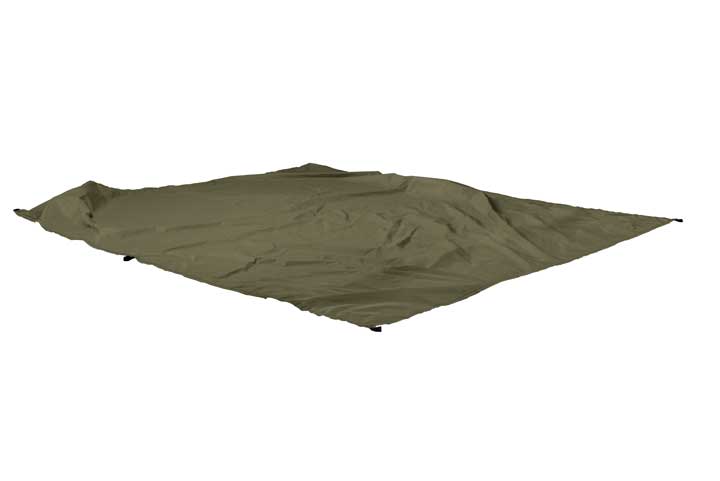
Can You Heat A Tent With A Candle?
If you’ve ever wondered about whether or not a candle can heat a tent, I’m here to tell you: yes.
How Many Candles Does It Take To Heat A Tent?
A candle emits radiative heat, and in a small space like a tent, even the weak power of a single candle’s flame can serve to raise the temperature considerably. Two or three will obviously raise the temperature even more.
That said, however, in the overwhelmingly flammable environment that is a tent, you may be wondering if candles can heat a tent safely. I tell people that so long as a pair of eyes monitor the candle, you should be fine. If you’re using a candle to light your tent, you can’t be careless, and you certainly can’t go to sleep.
A safer alternative to an open-top candle is a candle lantern (or oil lantern), which provides heat akin to other kinds of candles but has some cover to prevent the accidental spread of flame. It bears repeating that even candle lanterns need to be extinguished before bedtime.
Non-electric Heater
Plenty of you reading this article will have heard of using heaters to warm a tent, but did you know you can easily make your own heater?
How Can I Make A Heater Without Electricity?
This environmentally-friendly alternative to the standard electric heater is easy to make, requiring extremely common household items.
To make a heater without electricity, you just need a clay pot and some tea candles. The tea candles, all lit simultaneously, generate heat that’s held in and ultimately radiated by the clay pot.
The downside of this DIY heater? Once again, the open flames make it highly inadvisable to sleep while this baby is running.
Hot Rocks
This is an idea I love for its simplicity and resourcefulness. In any winter camping situation that I can think of, I had a fire before going to bed. One way to keep your tent warm is by using the radiation from the hot rocks that were beneath your fire.
The advantage of using hot rocks to heat your tent without electricity is that these rocks come for free with your fire, and they stay warm for quite a long time (certainly long enough for a good night’s sleep).
One consideration is that rocks are susceptible to exploding when heated up too quickly. So, with that in mind, it’s important to collect rocks that aren’t immediately adjacent to a water source and warm them up methodically to avoid any injury. Another thing to beware of is the sheer heat of the rocks, especially when you first take them out of the fire. You’ll want to keep the hot rocks in such a way that even if you accidentally roll over during sleep, you won’t burn yourself.
Big Blankets
I talked about insulation a bit above, and this very basic solution can actually be a godsend. Okay, you might be saying here, “Alex, this article is about heating the tent without electricity.” You’re right, but hear me out. In addition to making your body warm, big blankets absorb your body’s heat and other heating sources and serve to trap heat in the tent.
Even if you’re not curled up beneath the blanket, having a big blanket will help to insulate you from the ground and keep your body warm while it’s doing it.
Living Beings
In the middle ages, the peasantry used to bring the livestock inside with them into the house during the winter months. All these bodies, squeezed together in the abysmally-insulated homes of the peasants, served to keep hypothermia away. This was especially helpful for children whose bodies are much more vulnerable to cold and who were an essential source of labor for the often-overworked parents.
Having a dog, a person, or any other animal in the tent with you can be an excellent way to keep warm in the wintertime.
Depending on your level of intimacy with the person, the rule of thumb is the closer, the better. Zipped up together inside a sleeping bag generates a lot of heat for both bodies and is a standard survival technique.
If you’re very close with that other person, there’s another way to generate heat that also involves a little bit of cardiovascular exercise. Know where I’m going with this? Good.
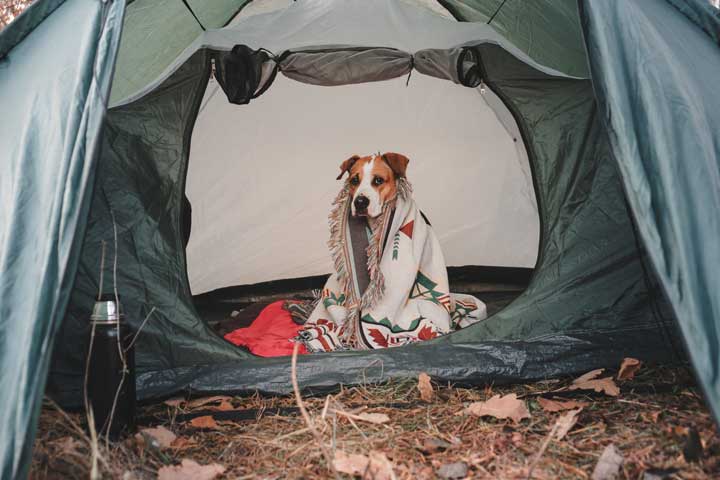
Radiant Heater
Many radiant heater today are electric-powered, but if you want to heat your tent without electricity, there are gas heaters that get the job done in a winning fashion. These powerful heaters are extremely safe to use — just be sure you bring enough propane with you to last the night.
Catalytic Heater
The Catalytic heater is a flameless heater that uses chemical reactions to heat your tent. We won’t go into the science here, but the name “catalytic” refers to the catalyzing reaction of the molecules in the heater, which emit heat when broken down through this reaction.
That said, however, there are certain reasons to be wary of this kind of heater. While the heater itself is flameless, guaranteeing safety from fire hazards, the heater’s emission of gases may be unsafe in such close quarters as a tent. Furthermore, users should be extremely careful not to knock the catalytic heater over, as this can be dangerous: this means you shouldn’t go to sleep while the catalytic heater is in operation.
Wind Barriers
Strong wind conditions can be a major obstacle between you and a warm night’s sleep in your tent. By placing wind barriers between your tent and the wind, you can reduce the wind chill and effectively heat your tent. Here are some natural wind barriers you can employ to keep out the wind chill.
Flora
Dry leaves in big clumps can act as wind barriers to help insulate your tent. You can make big piles of these leaves all around your tent first. Then, find long bushy branches with dry leaves on them. Stick them leaf side up into the ground, creating a wall of leaves. Overlap the branches all around your tent to create a nice wall that keeps the wind at bay.
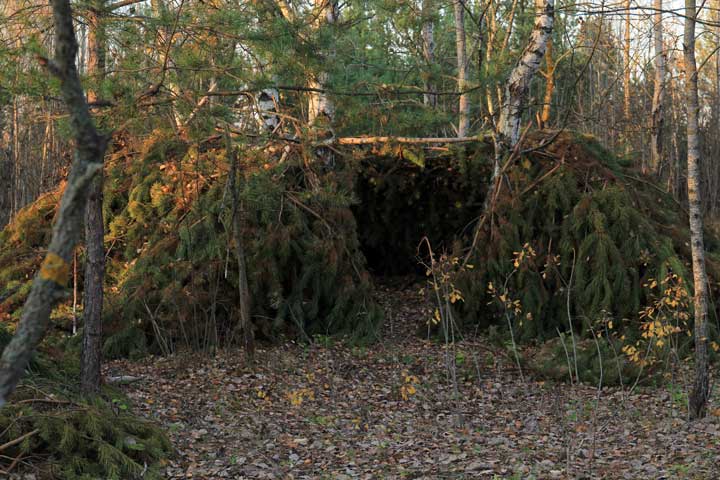
The Igloo Method
With the igloo method, you use snow—that’s right, snow—to keep yourself warm. Fluffy snow traps air within it and, as such, is perfect for insulation. You should build a barrier of at least a foot in height all around your tent to be effective against the wind.
Mylar Blanket
For the uninitiated, a mylar blanket or space blanket is an extremely light blanket that is heat-reflective. Mylar blankets are made of a thin plastic sheet and are called space blankets because this material is wrapped around the exterior of a spacecraft to help with thermal control. They’re incredibly effective for people. Wrapping your tent up with one is a very sure way to stay warm in cold conditions.
Just be sure you don’t use it as an actual blanket. I find they make me too hot, and then I end up sweating and creating unnecessary condensation.
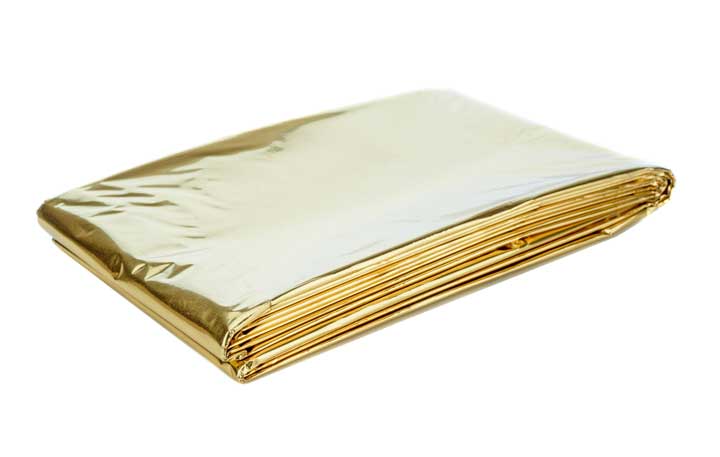
Foam Mat Conduction
Another way to insulate your body from the cold ground outside your tent is via a foam mat. A foam mat holds the heat that your body puts into it. As such, it is not only effective as a source of insulation; it also is an effective source of heat conduction.
As an added bonus, sleeping on the ground is just so much more comfortable with a foam mat.
Sleeping Bag
A sleeping bag is one of the essentials of camping survival in cold conditions. It probably goes without saying that the kind of sleeping bag you have matters here. Cheaper sleeping bags are made out of materials that don’t retain heat very well, and, as such, even in only middlingly cold conditions, these bags will leave you shivering.
A quality sleeping bag with a high heat rating is an excellent way to heat your tent without electricity.
Hand / Foot Warmers
Hand and foot warmers are not items to be overlooked, especially in the bitterest cold conditions. Like catalytic heaters, hand and foot warmers take advantage of natural chemical reactions to generate heat. Unlike catalytic heaters, however, this heating process doesn’t emit potentially poisonous gas and is the result of iron and other minerals reacting with the air.
Hand and foot warmers can last a long time (up to 10 hours) and have saved many a finger and toe through the years from frostbite.
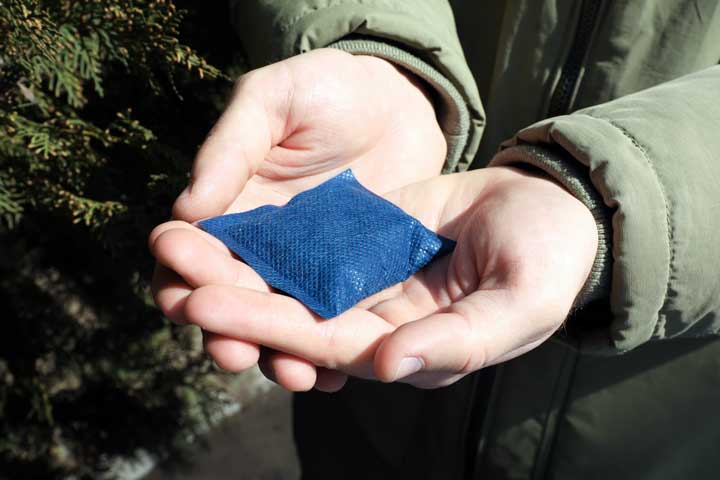
Dehumidifier Bag
Here’s a fact you may not have considered, even if you’ve been camping for many years. When the air is humid, it’s colder. Why? In humid conditions, we conduct heat from our body faster and get cold faster. By using a dehumidifier bag, you can keep your tent environment incredibly dry and, as a result, help keep you incredibly warm.
How Do Backpackers Stay Warm In A Tent?
We’ve talked about a lot of ways to heat your tent in this article, some requiring more space than others. When your equipment is extremely limited, though, how do you stay warm?
Of my ideas above, some are impractical, like the dehumidifier, radiant heater, or candles. There are some really useful ways to keep your tent warm during backpacking, however. Here, insulation is key. Like using dry leaves or snow, the natural insulation I discussed is a classic way to insulate your tent.
A mylar blanket can also make a massive difference in backpacking. These blankets are also especially helpful because they’re so light and easy to pack along with you.
How Do You Keep A Tent Warm During The Winter?
Heating a tent can improve your quality of life even in Summer camping situations, but oftentimes in winter, it’s absolutely essential. Depending on the nature of the shelter you’re using, there are different advisable strategies to keeping warm.
Where the air can flow more easily, a catalytic heater can be helpful. In smaller-tent situations, where there is less ventilation, the heaters should probably be avoided in favor of hot water bottles, foot/hand warmers, hot rocks, and insulation.
Is There A Safe Way To Heat A Tent?
In this article, we’ve discussed many ways to heat your tent, but some of these methods are much safer than others. Remember, when you’re asleep, you shouldn’t have any open flames or heaters running that could pose a danger to you when knocked.
Except in extremely cold situations when there are no other resources available to you, I wouldn’t advise heating yourself with candles. Although it’s a fun idea, there are simply safer, more efficient options to burn through (no pun intended) first.
Creating a wind barrier with snow or leaves is a very safe idea that any camper can do easily and with no extra resources. Hot rocks, too, don’t require special equipment (besides the materials required to create fire). A mylar blanket, extremely effective at heat retention and incredibly light, is a good thing to have around at all times—just in case.
Conclusion
I hope this article has given you some ideas about how to tent in a more sustainable, eco-friendly way. Whether you’re a bushcraft camper or a once-a-year-with-family kind of outdoor enthusiast, being in nature has a way of reconnecting us with the Earth of which we are all a part. Stay safe, stay warm, and stay outdoors!




